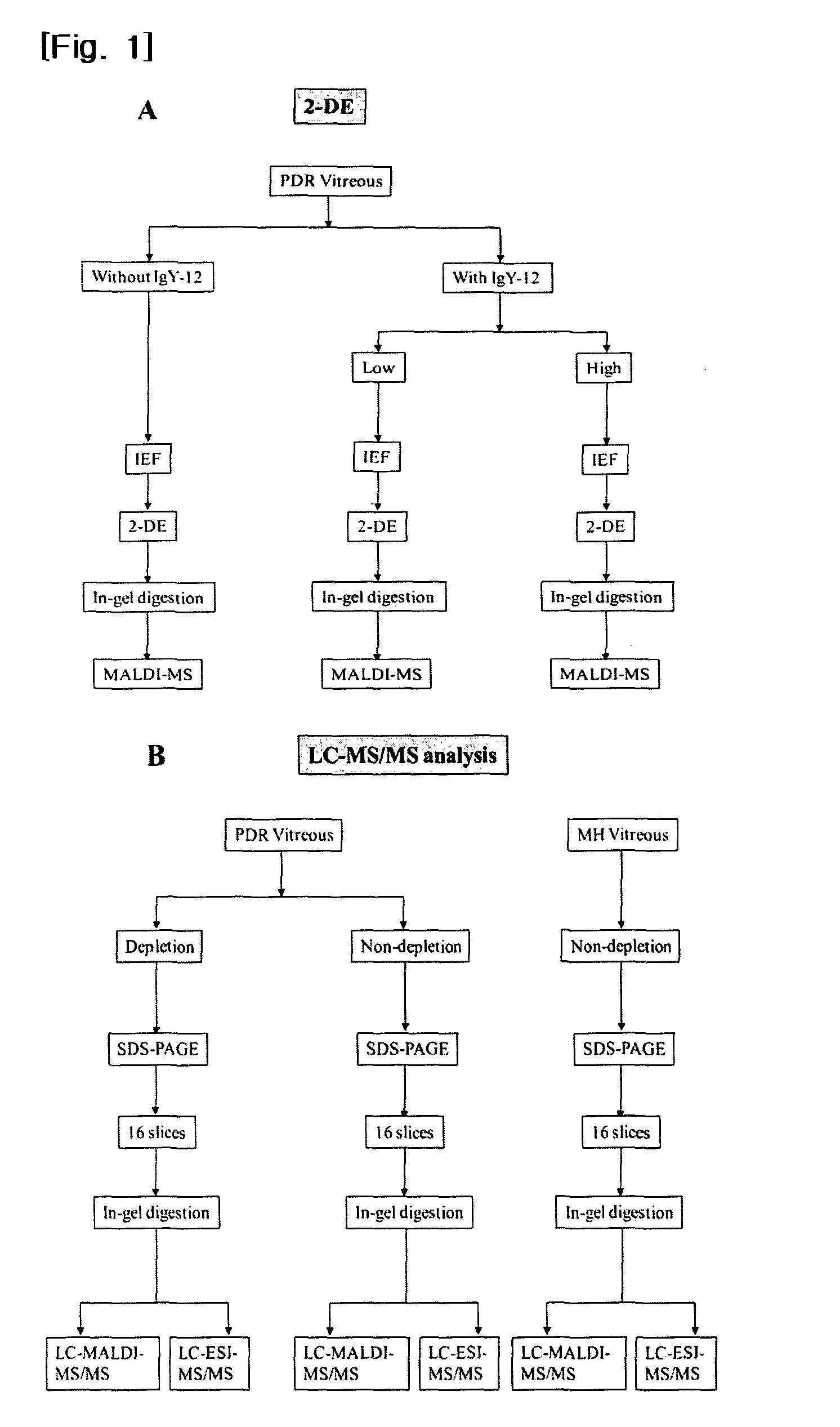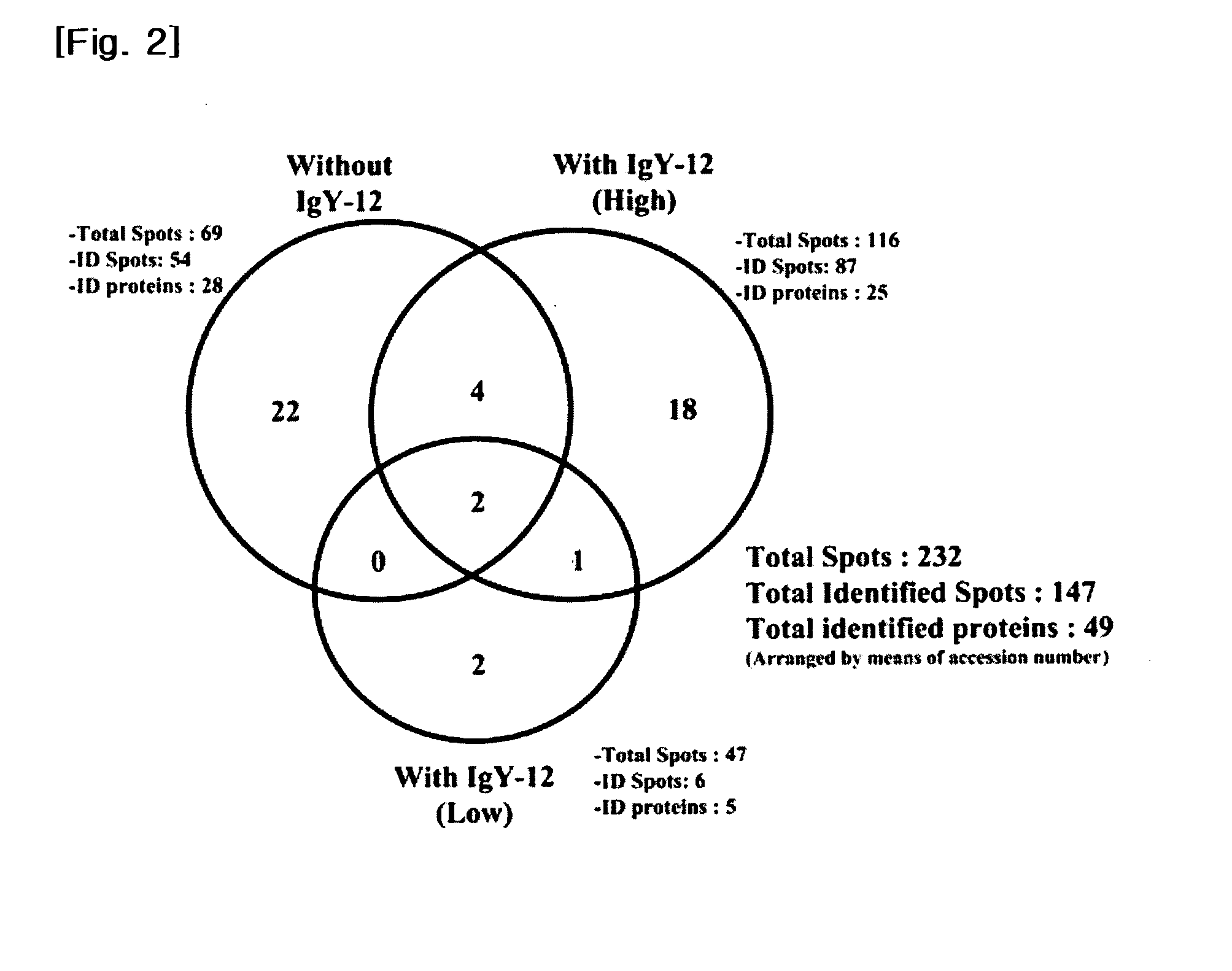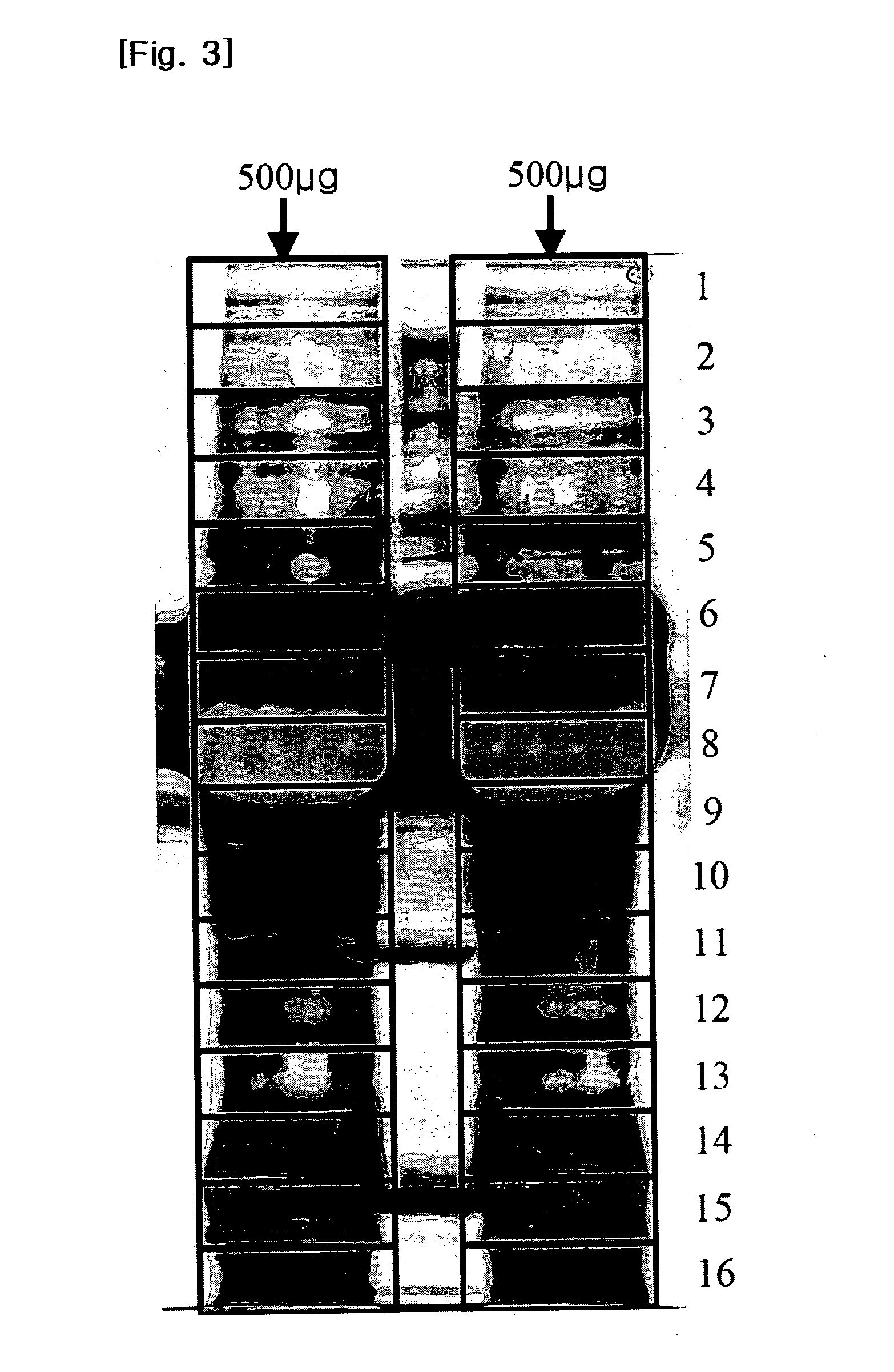Biomaker composition for detecting diabetic retinopathy and diagnostic kit therefor
a biomaker and composition technology, applied in the direction of immunoglobulins, peptide sources, peptide sources, etc., can solve the problems of difficult to evaluate changes in entire vitreous humor protein profiles and identify novel markers of pdr pathogenesis
- Summary
- Abstract
- Description
- Claims
- Application Information
AI Technical Summary
Benefits of technology
Problems solved by technology
Method used
Image
Examples
example 1
1. Test Method
[0070](1) Patients and Vitreous Collection
[0071]We collected undiluted vitreous samples from 8 eyes of 8 PDR patients for the 2-DE experiment and from 11 eyes of 11 PDR patients for LC-MS / MS, during operations for tractional retinal detachment involving the macular region. Only patients that exhibited active neovascular membranes in extensive retinal areas were included, and those with gross vitreous hemorrhage or a history of recent vitreous hemorrhage, previous ocular surgery (including cataract surgery), or of another ocular disease, such as uveitis, were excluded. In order to acquire control samples from non-diabetic patients, we collected vitreous samples from 14 eyes with a small idiopathic macular hole (MH) (see Table 7).
TABLE 7Sample set (patientMean ageMean concentration:numbers)(range)μg / μl (range)PDR for 2-DE (n = 8)62.5 (37-72)5.6 (3.3-7.5)PDR for LC-56.0 (52-73)6.4 (2.6-9.7)MS / MS (n = 11)MH for LC-63.0 (45-71) 0.43 (0.10-1.21)MS / MS (n = 14)
[0072]MH vitreou...
example 2
1. Materials and Methods
[0121](1) Reagents
[0122]β-galactosidase peptides is obtained from Applied Biosystems (USA) and acetonitrile (ACN), formic acid (FA), trifluoro acetic acid (TFA) and most other chemicals such as urea, DTT and IAA are from Sigama (USA). C18 Ziptip for peptide desalting is from Millipore (USA) and trypsin for in-solution digestion of protein is from Promega (Madison, Wis., USA). Vitreous and its corresponding plasma had been collected at Seoul National University Hospital after IRB approval.
[0123](2) Sample Collection
[0124]Vitreous samples were collected as described previously. Plasma samples which are corresponding to individual vitreous sample were collected in K2-EDTA Vacutainer (BD Sciences, USA). After incubating 30 min in room temperature, the centrifugation in 3,000 g during 10 min was followed. Each plasma sample was divided as 50 μl and was kept in −70° C.
[0125](3) Concentration Determination
[0126]Beforehand, each plasma sample was diluted with 3 volum...
PUM
| Property | Measurement | Unit |
|---|---|---|
| concentration | aaaaa | aaaaa |
| pH | aaaaa | aaaaa |
| pH | aaaaa | aaaaa |
Abstract
Description
Claims
Application Information
 Login to View More
Login to View More - R&D
- Intellectual Property
- Life Sciences
- Materials
- Tech Scout
- Unparalleled Data Quality
- Higher Quality Content
- 60% Fewer Hallucinations
Browse by: Latest US Patents, China's latest patents, Technical Efficacy Thesaurus, Application Domain, Technology Topic, Popular Technical Reports.
© 2025 PatSnap. All rights reserved.Legal|Privacy policy|Modern Slavery Act Transparency Statement|Sitemap|About US| Contact US: help@patsnap.com



